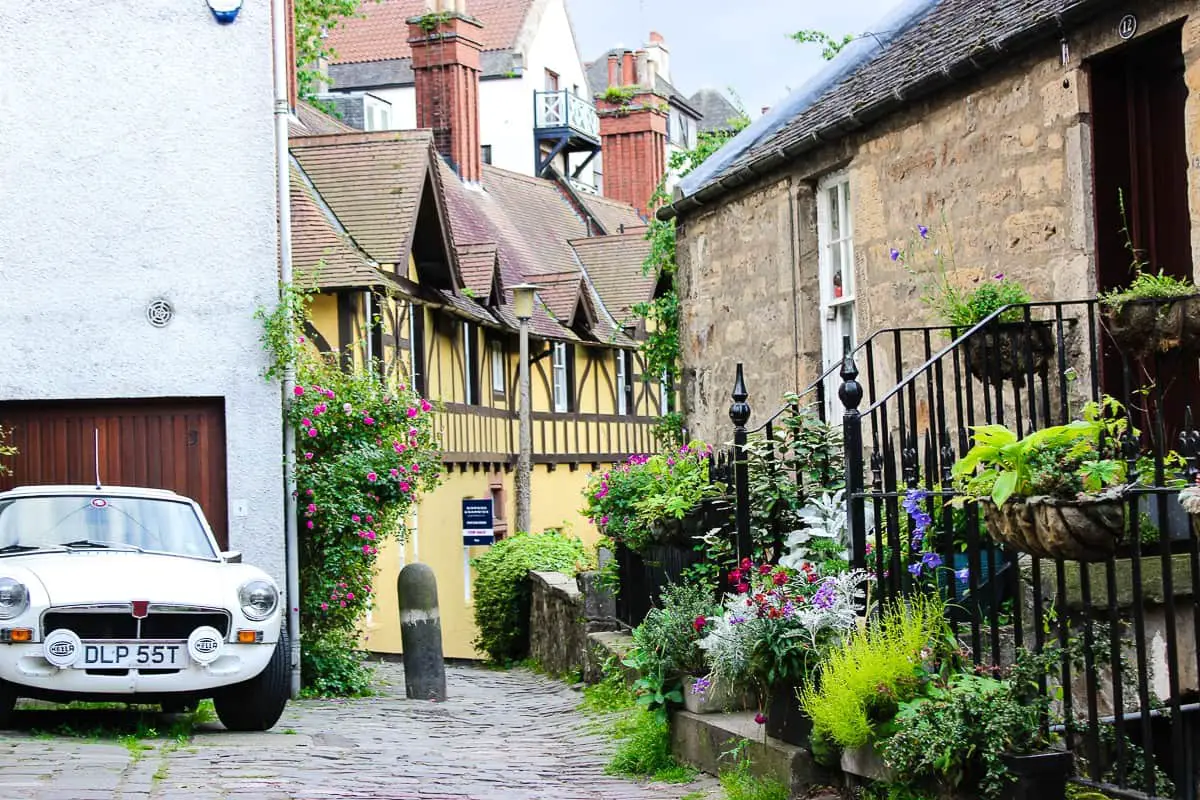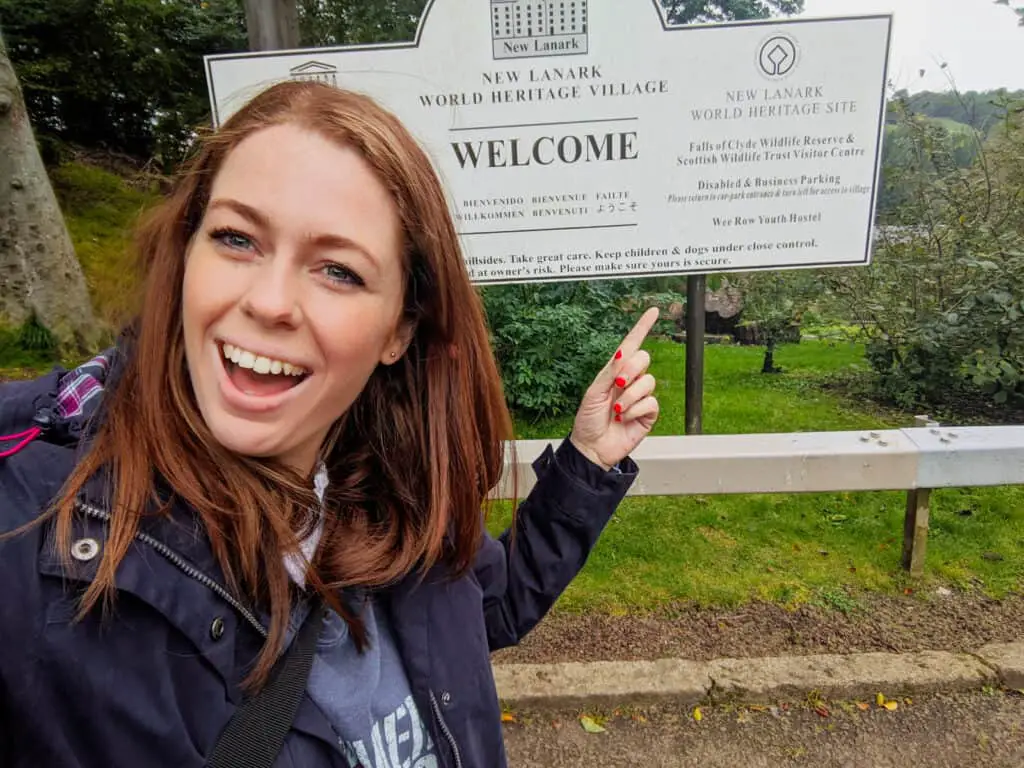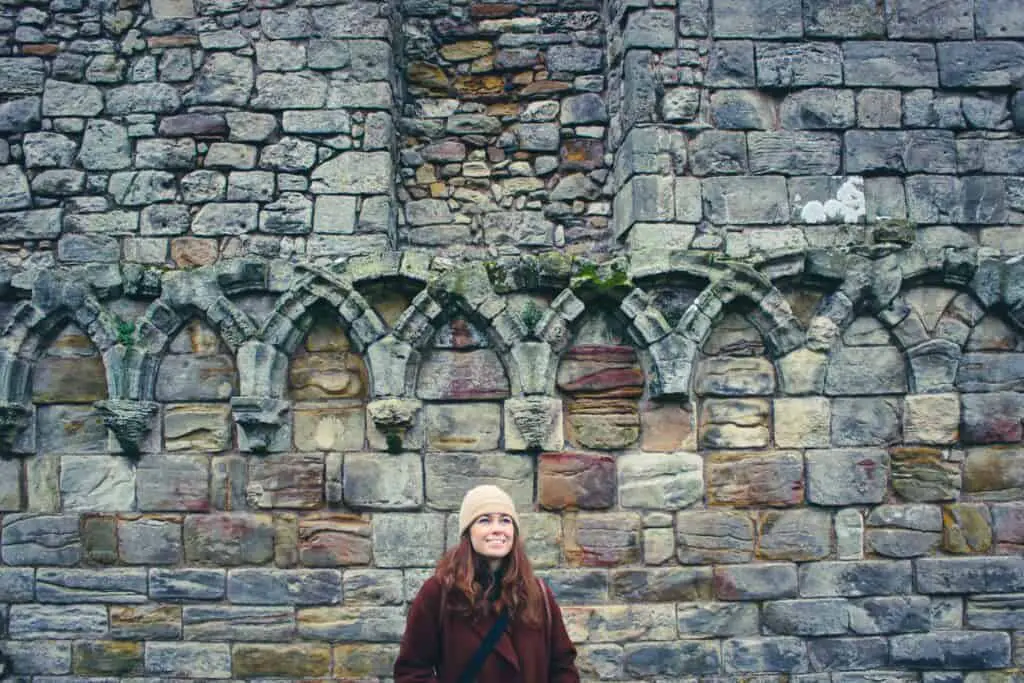Dean Village is famous for being one of the most picturesque spots in Edinburgh. On rare sunny weekends, nothing is more representative of idyllic village life than charming, car-free Dean Village.
How Long Does it take To Visit Dean Village Edinburgh
You can spend anywhere between 10 minutes to an hour exploring Dean Village. If you want to truly explore the village by visiting The National Gallery of Modern Art and the cemetery, allow an hour.
Where Is Dean Village Edinburgh
Dean village lies north-west of central Edinburgh and is approximately one mile from the center of Edinburgh.
How To Get To Dean Village Edinburgh
On foot
As Dean Village is traffic free, I recommend visiting on foot if you can. It’s a 17 minute walk from Haymarket train station.
By Car
There is no parking in Dean Village, meaning your best bet is to park close by. There is a car park at the Scottish National Gallery of Modern Art and from there it takes between 5-10 minutes to walk to Dean Bridge at the centre of Dean Village.
By Public Transport
There are no bus routes travelling directly through Dean Village. You can get the X38 bus from Haymarket train station and alight at Shandwick Place. Then it’s a 5 minute walk.
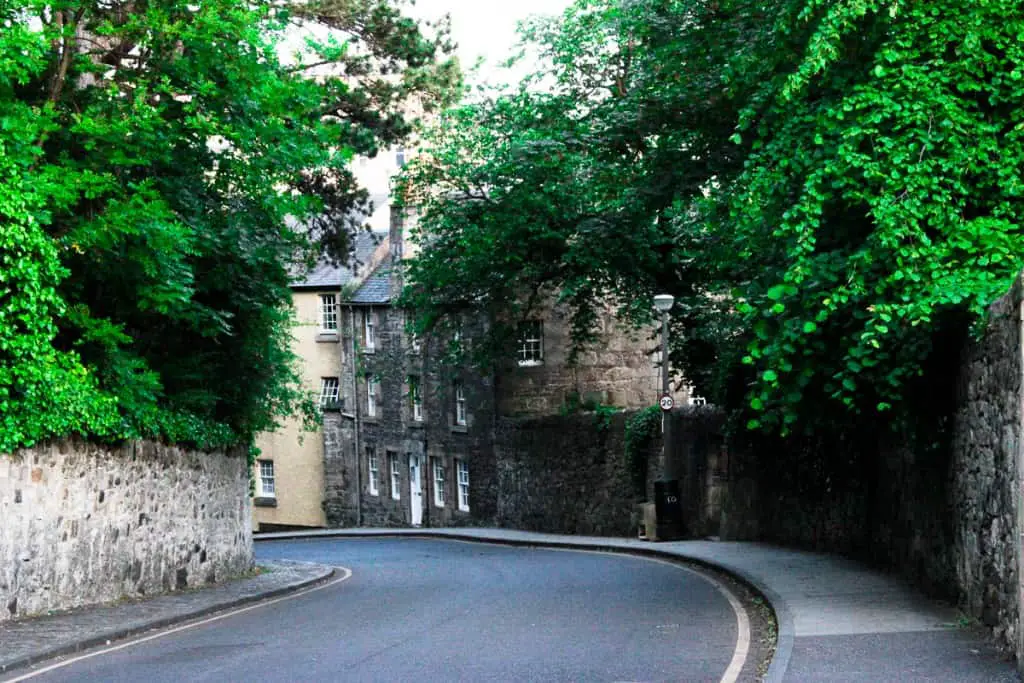
Is There Anywhere To Eat In Dean Village?
There are no coffee shops, newsagents or restaurants in Dean village. I recommend you walk along the Water of Leith to visit Stockbridge, where there are plenty of bars, restaurants and cafes.
What To See in Dean Village Edinburgh
Dean Village Edinburgh does not feature ‘sites’ in the typical sense, but there are some interesting buildings to see which I have outlined below.
Well Court
Built between 1883-6 this building was designed by Sydney Mitchell for John R. Findlay. Mr Findlay was the owner of The Scotsman newspaper. He wanted to be able to see the court from his house at No. 3 Rothesay Terrace. He wanted to gift this housing to the village as it had started losing out on trade to the flour mills at Leith at this point.
The building is made up of two and three bedroom flats with a separate social hall that was built for residents to be able to socialise in. The clock tower is modelled on the old Tron Kirk steeple.
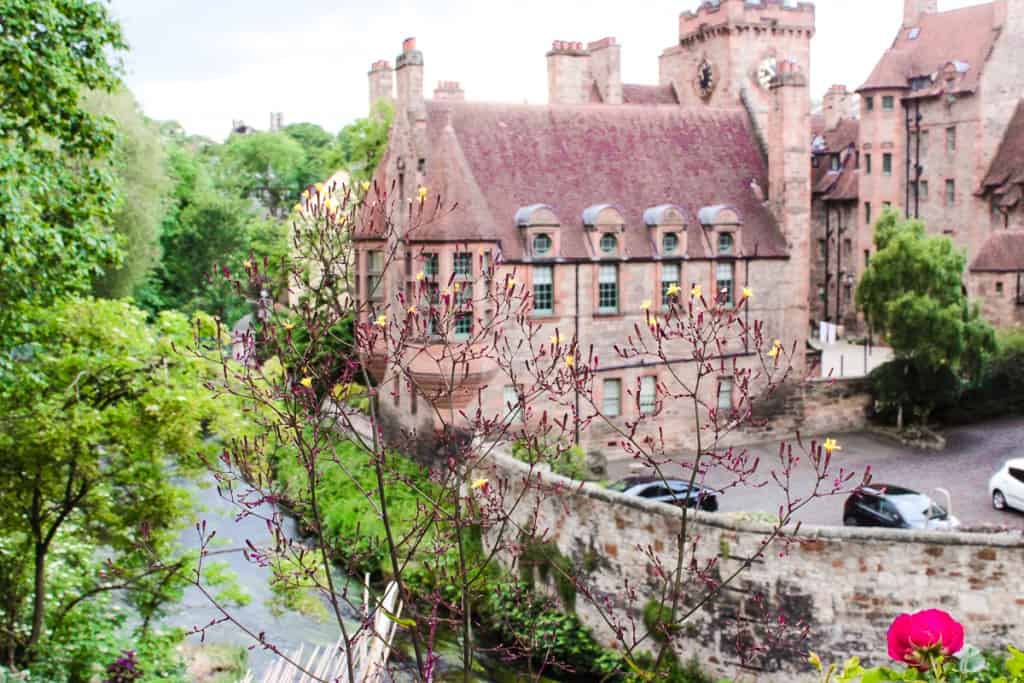
Hawthorne Buildings
Finished in 1895 by the firm Dunn and Findlay. The Findlay mentioned in the firm’s name, was the son of John R. Findlay who built Well Court.
Drumsheugh Toll, Belford Road
This house was built by Sir George Washington Browne, a well known Scottish architect in 1891 for his friend, the artist Charles Martin Hardie.
Drumsheugh Baths
These Victorian baths have been turned into a private swimming club, which claim to have the best quality water in Edinburgh. Inside features Moorish architectural elements recreating the spirit of traditional Turkish baths.
National Gallery of Modern Art
The National Gallery of Modern Art used to be John Watson’s School. John Watson was a Writer to the Signet. This was a private society of Scottish solicitors, which dated back to 1594. John Watson died in 1762 and left a whopping £5,000 to the Writers of the Signet for charitable purposes. The equivalent amount today would be roughly £900,000.
In 1822, the Writers to the Signet had a total of £110,000 to be used toward a charitable cause. They obtained an Act of Parliament for a school with boarding accommodation for children who were fatherless but whose fathers had been classed as ‘a professional’.
The architect William Burn was given the job to design the building. Inside the building was plain. The first floor rooms were originally the dormitories.
West Mill
There has been a mill in this location since 1573. In 1734 the City sold the Dean mills to the Baxter (Baker) Incorporation who rebuilt this mill in 1805. The names of their Deacon and their officers are noted on the wheatsheaf roundel in the SW gable. From the outside this is the best surviving Edinburgh grain mill. The West Mill was restored and converted into 22 flats in 1973.
Belgrave Mews
Belgrave Mews is situated on the old Dean House estate.
History Of Dean Village
During the building of Oxford Terrace and Lennox Street in 1855 several historic burial chambers were found.During the construction of Dean Bridge several urns containing cremations were unearthed.Axes dating from the Late Bronze Age date to have been found along the Water of Leith, because of these findings it is thought that a small port or trading point could have existed then.
Dean Village was originally known as the Water of Leith Village, which was a large Edinburgh milling settlement. The mills are thought to have existed since the reign of David I, who was King of Scotland from 1124 to 1153. Sadly, not many of these mills survive.
1830. Dean Bridge built. Village continued to grow until giant flourmills sprung up in Leith in the late 1800’s. There was a tannery in the village until 1970.

